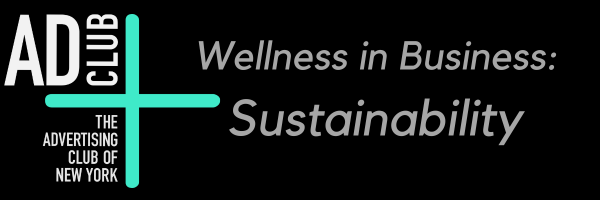Wellness in Business: Sustainability

 Q&A with Jenna Cosenza, Associate Director, People Strategy & Development, Momentum Worldwide
Q&A with Jenna Cosenza, Associate Director, People Strategy & Development, Momentum Worldwide
How do you sustain talent in your company? How can companies sustain purpose-driven initiatives and business practices?
How do you sustain talent? By making the experience of working at our business unlike any other. An experience that puts people at the center. What we call ‘The Total People Experience (TPE)’, which is built around our purpose-driven strategy, Make it Matter (MIM).
In a competitive industry that is constantly inundated with change, our people are our greatest differentiator and that’s why it is vital to show them they are valued.
The TPE and our MIM purpose are only sustainable because they are both top-down and bottom-up initiatives. Purpose-driven initiatives need to be embedded in every part of your organization and must be championed by people managers and leaders. In a hybrid setup, our professional networks have shrunk, and the influence and responsibility of people managers and leaders has grown exponentially. Every initiative needs to have their buy-in, their voice and their presence. This can be shown through regular Town Halls: whether global, regional, or local, we use all-agency meetings to provide real-time updates on our MIM pillars, or by encouraging recognition through our peer-to-peer recognition platform, where employees can reward peers for their contributions to MIM.
How are companies handling ESG (Environmental, Social & Corporate Governance) goals during an economic downturn?
During economic downturns, ESG goals are too often the first to be deprioritized. In collaboration with The Washington Post and Reuters, Revelio Labs conducted a study of 600 companies over the last year and found a 33% cut rate for DE&I positions (compared to 21% for non-DE&I roles). Large corporations are also starting to falter in their commitment to wellbeing – whether that is cuts in jobs, like Google’s director of mental health & wellbeing. And we hear more conflicting studies in relation to sustainability. Some reports suggest sustainability is taking a back seat. Only 33% of mid-market businesses have a net-zero carbon strategy (compared to 51% in the year prior), whereas others see it continuing to be a priority, with over 70% of companies increasing sustainability spending over the next year. So, while most businesses understand the importance and impact of sustainability, there is still work to be done from a DEIBA and Wellness perspective. And it is during these times that we prioritize ESG goals more than ever as the proof is evident – purpose-driven companies perform better.
Rather than cut back, companies should put an ESG-centered purpose at their core and focus on:
- The three- to five-year plan – While financial cutbacks may be unavoidable, map out where impact can still be made today, and what the plan is moving forward out of the economic downturn.
- The long-term impacts of prioritizing ESG – Being more sustainable can double as a long-term, cost-effective solution, like reducing your carbon footprint through less travel.
Social equity is one of the three main pillars in a sustainable workplace – and is highly important in the advertising and media industry. How does your company/agency show they are involved in such initiatives publicly? Do you believe making it aware that your company is involved in these initiatives is important?
It’s important to our agency that, with any initiative, we look inward and get it right within our “walls” first, and then use our platforms to celebrate our successes, acknowledge our missteps and inspire others to grow in the space with us.
However, it’s important to watch out for, and avoid any kind of “washing” – green, diversity or wellness. We’re seeing many companies exaggerating their commitments to ESG and this not only has a negative impact on the organization (loss of consumers, clients and/or talent), but on all our ESG efforts.
As many companies are now a full-time hybrid workplace, what do you think are some of the pros and cons with this new way of working?
Some of the obvious pros include increased productivity, focus, autonomy, and trust.
The beauty of our hybrid policy is that we work with our teams to choose which days we’ll work in the office or remotely, allowing us to plan for peak productivity.
There are also pros that relate to ESG:
- From a DEIBA perspective, our talent pools have grown because we are recruiting from more locations with flexible working options, allowing for more diversity on every candidate slate.
- Our impact on the environment is reduced from traveling less in terms of commuting and business travel.
- Employees can also own their wellness, with less time commuting allowing for more time to spend on personal wellness.
- However, it’s important to strike a balance, as our workplace and professional wellness can feel deprioritized in a hybrid environment, making workplace wellness (effective ways of working that allow employees to thrive) critical.
Overall, I believe the pros of the hybrid workplace outweigh the cons, and the biggest pro of all is that it is challenging us to reimagine ways of working that are truly flexible, inclusive, and meaningful.
Jenna Cosenza is an Associate Director of People Strategy & Development at Momentum Worldwide, a total brand experience agency. As a champion of change, Jenna creates meaningful and innovative experiences that educate, elevate, and engage. She is a practitioner of Insights Discovery and has a Masters in Industrial & Organizational Psychology from NYU.
